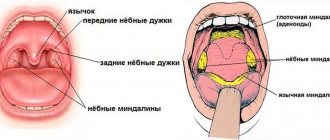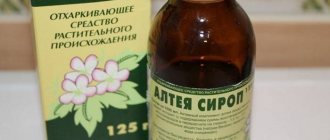Causes of wet cough
In a healthy person, phlegm or mucus is constantly excreted without irritating the receptors in the bronchi.
But during the inflammatory process, the composition of mucus and its consistency changes: viscosity increases, water content decreases and protein increases. In most cases, the causes of productive cough are infectious diseases of the respiratory tract (respiratory infections), including:
- viral infections;
- pneumonia;
- acute and chronic bronchitis;
- laryngotracheitis;
- whooping cough, etc.
The following can also trigger a cough with phlegm:
- allergy;
- heart failure;
- tuberculosis;
- cystic fibrosis;
- oncological diseases.
Any of these factors can cause mucus (phlegm) to build up, resulting in a cough. On the one hand, coughing helps remove mucus from the respiratory tract, and on the other hand, it leads to the spread of inflammation in the bronchi.
Cough in children: causes and treatment
Foamy and viscous cough
When passing through the respiratory tract, sputum may become slightly foamy.
Normally, the volume per day should not exceed 10 ml. When it comes out, it is swallowed back. If everything is in order with a person’s health, the discharge has no odor.
Viscous sputum appears with allergies:
- if the pathological condition is severe;
- with frequent contact with a provocateur (allergen): the mucous membrane swells because of this, swelling occurs.
If the discharge is caused by an allergic reaction, there should be no admixtures of pus or blood clots in the mucus.
White or yellowish viscous sputum occurs with bronchial asthma and indicates a prolonged course of the disease. When the pathological condition worsens, the mucus becomes viscous and transparent. Sputum of this nature is called glassy.
If viscous mucopurulent discharge is observed, this indicates the addition of an infectious agent.
If viscous sputum occurs, you need to undergo diagnostics. If its consistency is quite thick, the mucus can clog the airways. This will lead to serious complications.
Color of sputum when coughing
Remember that a diagnosis cannot be made based solely This requires competent advice from a specialist.
Yellow color of sputum
Yellow mucus occurs when there is an infection in the respiratory system. At the initial stages of a cold, a yellow color appears, which later, during the inflammatory process, can turn into a greenish tint. Yellow sputum may contain pus.
Yellow color appears with sinusitis, influenza and ARVI, bronchitis, pneumonia, pulmonary edema, abscess, tuberculosis, cystic fibrosis. Bright canary-colored sputum may indicate pulmonary aspergillosis.
Green phlegm
Green sputum occurs due to a bacterial infection (streptococci, staphylococci). The green color of mucus is characteristic of diseases: sinusitis, sinusitis, laryngitis, purulent bronchitis, pneumonia, lung abscess.
Rust-colored sputum
Brown or rust-colored sputum occurs mainly in people who smoke, as combustion products accumulate in the lungs of smokers.
A reddish-red hue indicates the appearance of blood in the respiratory system. This happens due to severe coughing, which causes small blood vessels to rupture.
Sputum of this color can be caused by inflammation of the bronchopulmonary system, lung abscess, pneumonia, cystic fibrosis, and blockage of blood vessels.
Sputum with blood
Pink mucus can form with mild bleeding, and if this symptom does not go away within three days, the mucus takes on a reddish tint. Then you should definitely and immediately consult a doctor.
Red color of mucus can be due to diseases: lung abscess, pulmonary edema, tuberculosis, cancer, pulmonary infarction.
Foamy sputum
The appearance of a pinkish foamy formation sometimes indicates dangerous heart failure. If the mucus has a reddish tint and has a foamy structure, this may be a sign of anthrax.
Types of sputum
The following is a list of types of sputum and conditions/diseases in which such sputum can occur:
- viscous mucous sputum - bronchospastic processes, bronchial asthma - yellowish sputum with streaks of pus - pneumonia (pneumonia) - rusty sputum - lobar pneumonia - bright red sputum with blood content - necrotic process (infarction) of the lungs - yellow-brown sputum - lung abscess - foamy bloody sputum - pulmonary edema - clear sputum and blood fibers - bronchogenic lung cancer - bloody sputum - lung cancer - sputum with a sweetish unpleasant odor - purulent bronchitis - foul-smelling sputum - gangrene of the lung
Treatment of cough with phlegm
Expectorants
Expectorants include herbal preparations: licorice, marshmallow, thyme, ivy and others. They enhance the secretion of bronchial glands and facilitate the removal of mucus.
The effect of herbal medicines is short-lived: usually about 2-3 hours, so their use in pediatric practice is not recommended. Small children cannot cough up accumulated mucus themselves. Frequent use can lead to the accumulation of excessive secretions in the lungs, a gag reflex, and sometimes worsening the infection. It is also necessary to take into account that allergic reactions to medicinal plant extracts are possible.
Mucolytic drugs
Mucolytic drugs thin the sputum, making the mucus less thick and viscous, but its volume does not increase. Drugs in this group improve the physicochemical properties of sputum and reduce the adhesion of secretions to the walls of the respiratory tract. In combination with stimulation of the ciliated epithelium, the sliding and removal of mucus is facilitated.
Drugs that combine mucolytic and secretomotor effects are the most reasonable choice for the treatment of productive cough. Such drugs include: bromhexine, ambroxol, acetylcysteine and their analogues.
From dry cough to productive cough
Respiratory infections often begin with a dry cough. In this case, sputum is not released, and the pathogen that led to the cough begins to multiply and accumulate. This causes further inflammation of the respiratory system.
Very often, mucolytic drugs are used to convert a non-productive cough into a productive one. This is explained by the fact that with a non-productive cough:
- increased viscosity of secretions in the bronchi,
- the sliding of mucus along the bronchial tree is impaired,
- the activity of ciliated epithelial cells is insufficient.
In order to bring the pathogen out, you need to use medications that will not only promote expectoration, but also protect epithelial cells and restore their activity, which will affect the movement of mucus in the respiratory tract.
What does it mean if the discharge has no color (transparent)
If there is clear mucus, this does not mean that you can calm down and not consult a doctor. This type of sputum often occurs without coughing. The causes of the pathological condition lie in lesions of the nasopharynx.
If clear mucus comes out when you cough, in some cases this indicates infectious pathologies. Lack of color is usually characteristic of their chronic course. Colorless sputum is caused by:
- pathologies of the cardiovascular system (discharge is observed in a small volume);
- oncological diseases (accompanied by a strong cough, after which sputum comes out);
- laryngitis (cough lasts for a long period of time, little is secreted);
- allergic reaction (discharge caused by irritation of the internal membranes).
The causes of hyperproduction of mucus during coughing can be various factors. It is possible to establish the exact nature of its origin only with a complete diagnosis.
Bromhexine for cough with sputum
Bromhexine has a pronounced mucolytic and expectorant effect. It reduces the viscosity of sputum, increases secretory activity, and activates the movement of epithelial cilia in the bronchi. Thanks to these effects, mucus is removed and it does not accumulate in the lungs. In addition, the drug enhances the effect of antibiotics, increasing their effectiveness in fighting bacterial infections.
Bromhexine is used to treat respiratory diseases in all age groups. It is available in various dosage forms, has no toxicity to the body, combines well with many other drugs and has few contraindications.
Bromhexine: use and dosage
conclusions
- White, frothy sputum produced in moderate quantities (no more than 100 ml per day) is normal. It is produced by the glands of the trachea and large bronchi. The purpose of the secretion is to cleanse the respiratory system from pathogenic microorganisms.
- If the sputum changes its consistency, color, acquires a specific odor, or contains admixtures of pus and blood, you should immediately contact a medical facility. This may indicate the development of dangerous pathological conditions.
How long does the research take?
Sputum culture takes a long time because the bacteria need time to grow. After a few weeks, you can accurately determine their identity and sensitivity to the drugs. Thus, how long the analysis is done depends on the purpose and method of the study: the procedure takes from 1.5 to 3 months.
Sputum microscopy is a faster analysis. The speed of research depends on the order of the queue and the number of samples. On average, waiting for results takes from 1 to 2 days.
Our specialists
Chikina Svetlana Yurievna
Candidate of Medical Sciences, pulmonologist of the highest category. Official doctor, expert at Russian congresses on pulmonology.
30 years of experience
Kuleshov Andrey Vladimirovich
Chief physician, candidate of medical sciences, pulmonologist, somnologist, member of the European Respiratory Society (ERS).
Experience 26 years
Samoilenko Viktor Alexandrovich
Candidate of Medical Sciences, pulmonologist of the highest category. Nominee of the National Award “Best Doctors of Russia” “Calling”.
30 years of experience
Meshcheryakova Natalya Nikolaevna
Candidate of Medical Sciences, pulmonologist of the highest category, associate professor of the Department of Pulmonology named after. N.I. Pirogov.
Experience 26 years
Which doctor should I go to?
If you are coughing up blood or have green or yellow sputum, you should visit a therapist. He will conduct an initial examination and write out directions for tests. Based on the results obtained, consultation with a cardiologist, pulmonologist, phthisiatrician, or oncologist may be required.
If you experience frequent hemoptysis, you should visit a physician.
The causes of coughing up blood are different, so if unpleasant signs appear, you should not panic or make fatal diagnoses. Only a specialist can identify the cause of the pathology after a comprehensive examination.










